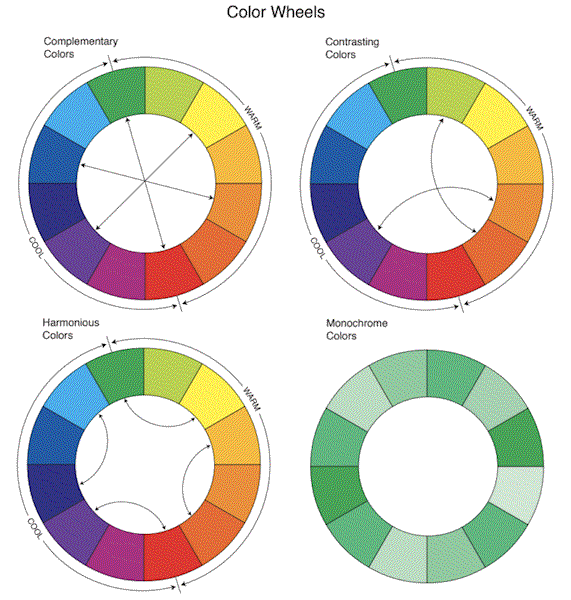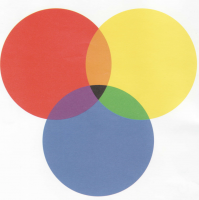Color awareness is an important part of everyone’s life! When you choose something to wear, decorate a room or pick crayons to color and handout, you are instinctively working with a color scheme.
Did you know there is a theory of choosing colors that complement each other? It is called the color wheel.

This pre and post test color wheel can be downloaded by clicking the PDF button bleow to help you learn what you already know and also help assess what you learn from today’s lesson.
Directions:
Step 1- Fold in half and start with the left side.
Step 2- Using a crayon, color and label the primary colors with a “1” and then color and label the secondary colors with a “2”.
Step 3- Label warm colors with a “W” and cool colors with a “C”.
Step 4- On the lines add the tertiary color names and label with a “3”.
Hint: There are 3 primary colors, 3 secondary colors, 6 tertiary colors.
Step 5- Read more below and correct you answers.
Step 6- With paper folded so you cant see the left side retake test.

The color wheel is a means of organizing the colors in the spectrum. The only colors that are not on it are black. white, and gray.

Colors are divided into groups. They are:
PRIMARY COLORS: cannot be produced by mixing other colors together: red, yellow, blue
SECONDARY COLORS: produced by mixing primary colors: violet, orange, green
TERTIARY COLORS: produced by mixing a secondary color with a primary color: red-orange and red-violet, yellow-green and yellow-orange, blue-green and blue-violet.
INTERMEDIATE COLORS: produced by mixing a primary and a secondary color: ex.: blue green, red violet
NEUTRALS: white, black, gray, and brown
Artists, interior decorators and designers often choose a color scheme by using the color wheel.
Color schemes may be selected by choosing colors from the wheel that will complement each other.
These are:
MONOCHROMATIC: several values of one color. ex.: light blue, medium blue, dark blue
ANALOGOUS: colors that are next to each other on the color wheel. ex.:yellow, yellow-orange, orange, and red-orange
COMPLEMENTARY: colors that are opposite each other on the color wheel. ex.: red and green, violet and yellow
SPLIT COMPLEMENT: three colors that are opposite each other on the wheel, but to either side of the exact opposite, ex,: red, blue-green, and yellow-green
DOUBLE SPLIT COMPLEMENT: four colors, two on either side of two complements, but not the complementary colors. ex.: red orange and red violet, yellow green and blue green

